《CHINA A NEW HISTORY ENLARGED EDITION》
| 作者 | 编者 |
|---|---|
| 出版 | THE BELKNAP PRESS OF HARVARD UNIVERSITY PRESS |
| 参考页数 | 546 |
| 出版时间 | 1992(求助前请核对) 目录预览 |
| ISBN号 | 0674116739 — 求助条款 |
| PDF编号 | 812446068(仅供预览,未存储实际文件) |
| 求助格式 | 扫描PDF(若分多册发行,每次仅能受理1册) |
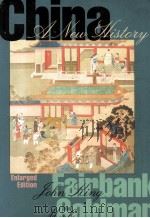
Introduction: Approaches to Understanding China's History1
The Variety of Historical Perspectives1
Geography: The Contrast of North and South4
Humankind in Nature14
The Village: Family and Lineage17
Inner Asia and China: The Steppe and the Sown23
PART ONERise and Decline of the Imperial Autocracy27
1. Origins: The Discoveries of Archaeology29
Paleolithic China29
Neolithic China31
Excavation of Shang and Xia33
The Rise of Central Authority37
Western Zhou39
Implications of the New Archaeological Record40
2. The First Unification: Imperial Confucianism46
The Utility of Dynasties46
Princes and Philosophers49
The Confucian Code51
Daoism53
Unification by Qin54
Consolidation and Expansion under the Han57
Imperial Confucianism62
Correlative Cosmology64
Emperor and Scholars66
3. Reunification in the Buddhist Age72
Disunion72
The Buddhist Teaching73
Sui-Tang Reunification76
Buddhism and the State79
Decline of the Tang Dynasty81
Social Change: The Tang-Song Transition83
4. China's Greatest Age: Northern and Southern Song88
Efflorescence of Material Growth88
Education and the Examination System93
The Creation of Neo-Confucianism96
Formation of Gentry Society101
5. The Paradox of Song China and Inner Asia108
The Symbiosis of Wen and Wu108
The Rise of Non-Chinese Rule over China112
China in the Mongol Empire119
Interpreting the Song Era126
6. Government in the Ming Dynasty128
Legacies of the Hongwu Emperor128
Fiscal Problems132
China Turns Inward137
Factional Politics140
7. The Qing Success Story143
The Manchu Conquest143
Institutional Adaptation146
The Jesuit Interlude151
Growth of Qing Control in Inner Asia152
The Attempted Integration of Polity and Culture154
PART TWOLate Imperial China, 1600-1911163
8. The Paradox of Growth without Development167
The Rise in Population167
Diminishing Returns of Farm Labor170
The Subjection of Women173
Domestic Trade and Commercial Organization176
Merchant-Official Symbiosis179
Limitations of the Law183
9. Frontier Unrest and the Opening of China187
The Weakness of State Leadership187
The White Lotus Rebellion, 1796-1804189
Maritime China: Origins of the Overseas Chinese191
European Trading Companies and the Canton Trade195
Rebellion on the Turkestan Frontier, 1826-1835197
Opium and the Struggle for a New Order at Guangzhou, 1834-1842198
Inauguration of the Treaty Century after 1842201
10. Rebellion and Restoration206
The Great Taiping Rebellion, 1851-1864206
Civil War209
The Qing Restoration of the 1860s212
Suppression of Other Rebellions214
11. Early Modernization and the Decline of Qing Power217
Self-Strengthening and Its Failure217
The Christian-Confucian Struggle221
The Reform Movement224
The Boxer Rising, 1898-1901230
Demoralization232
12. The Republican Revolution, 1901-1916235
A New Domestic Balance of Power235
Suppressing Rebellion by Militarization236
Elite Activism in the Public Sphere238
The Japanese Influence240
The Qing Reform Effort241
Constitutionalism and Self-Government244
Insoluble Systemic Problems247
The Revolution of 1911 and Yuan Shikai's Dictatorship250
PART THREEThe Republic of China, 1912-1949255
13. The Quest for a Chinese Civil Society257
The Limits of Chinese Liberalism257
The Limits of Christian Reformism260
The Tardy Rise of a Political Press262
Academic Development263
The New Culture Movement266
The May Fourth Movement267
Rise of the Chinese Bourgeoisie269
Origins of the Chinese Communist Party275
14. The Nationalist Revolution and the Nanjing Government279
Sun Yatsen and the United Front279
The Accession to Power of Jiang Jieshi (Chiang Kaishek)283
The Nature of the Nanjing Government286
Systemic Weaknesses289
15. The Second Coming of the Chinese Communist Party294
Problems of Life on the Land294
Rural Reconstruction299
The Rise of Mao Zedong301
The Long March, 1934-1935305
The Role of Zhou Enlai307
The Second United Front310
16. China's War of Resistance, 1937-1945312
Nationalist Difficulties312
Mao's Sinification of Marxism316
Mao Zedong Thought321
The Rectification Campaign of 1942-1944323
American Support of Coalition Government326
17. The Civil War and the Nationalists on Taiwan331
Why the Nationalists Failed331
Nationalist Attack and Communist Counterattack334
Taiwan as a Japanese Colony337
Taiwan as the Republic of China339
PART FOURThe People's Republic of China343
18. Establishing Control of State and Countryside345
Creating the New State, 1949-1953345
Collectivizing Agriculture352
Collective Agriculture in Practice354
Beginning Industrialization357
Education and the Intellectuals359
The Anti-Rightist Campaign, 1957-1958365
19. The Great Leap Forward, 1958-1960368
Background Factors368
The Disaster of 1959-1960372
Revival: Seizing Control of Industrial Labor374
Party Rectification and Education376
The Sino-Soviet Split378
The Great Leap Forward as a Social Movement380
20. The Cultural Revolution, 1966-1976383
Underpinnings383
Mao's Aims and Resources385
Role of the People's Liberation Army387
How the Cultural Revolution Unfolded389
The Red Guards391
The Seizure of Power393
Foreign Affairs395
Decentralization and the Third Front397
The Succession Struggle400
The Cultural Revolution in Retrospect401
Aftermath404
21. The Post-Mao Reform Eraby Merle Goldman406
Epilogue: China at the Close of the Centuryby Merle Goldman451
Note on Romanization and Citation458
Suggested Reading459
Publisher's Note515
Illustration Credits517
Author Index521
General Index531
1992《CHINA A NEW HISTORY ENLARGED EDITION》由于是年代较久的资料都绝版了,几乎不可能购买到实物。如果大家为了学习确实需要,可向博主求助其电子版PDF文件(由 1992 THE BELKNAP PRESS OF HARVARD UNIVERSITY PRESS 出版的版本) 。对合法合规的求助,我会当即受理并将下载地址发送给你。
高度相关资料
-

- A HISTORY OF MODERN TIMES NEW EDITION REVISED
- 1941 GEORGE G.HARRAP & CO.LTD.
-

- DONED ESTA MI CORAZON?
- BASCO PALOMA
-
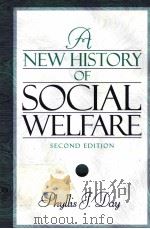
- A NEW HISTORY OF SOCIAL WELFARE SECOND EDITION
- 1997 ALLYN & BACON
-
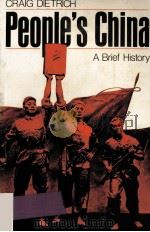
- PEOPLE‘S CHINA A BRIEF HISTORY
- 1986 OXFORD UNIVERSITY PRESS
-

- A CONCISE HISTORY OF CHINA
- 1999 HARVARD UNIVERSITY PRESS
-
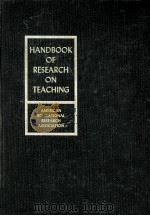
- A NEW INTRODUCTION TO GREEK:THIRD EDITION REVISED AND ENLARGED
- 1961 HARVARD UNIVERSITY PRESS
-

- A NEW PHILOSOPHY OF HISTORY
- 1995 THE UNIVERSITY OF CHICAGO PRESS
-

- A SHORT HISTORY OF ENGLISH LITERATURE FOURTH REVISED AND ENLARGED EDITION
- 1978 PENGUIN BOOKS
-

- A SHORT HISTORY OF ENGLISH LITERATURE FOURTH REVISED AND ENLARGED EDITION
- 1976 PENGUIN BOOKS
-
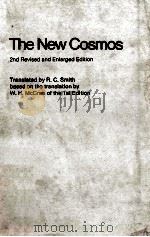
- THE NEW COSMOS 2ND REVISED AND ENLARGED EDITION
- 1977 SPRINGER-VERLAG
-

- A NEW HISTORY OF INDIA FIFTH EDITION
- 1997 OXFORD UNIVERSITY PRESS
-

- RED STAR OVER CHINA FIRST REVISED AND ENLARGED EDITION
- 1984 BANTAM BOOKS
-
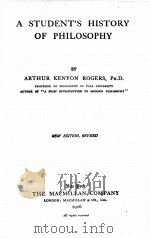
- A STUDENT‘S HISTORY OF PHILOSOPHY NEW EDITION
- 1926 THE MACMILLAN COMPANY
-
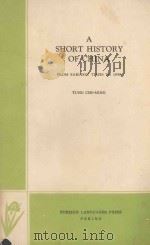
- A SHORT HISTORY OF CHINA
- 1965 FOREIGN LANGUAGES PRESS
提示:百度云已更名为百度网盘(百度盘),天翼云盘、微盘下载地址……暂未提供。➥ PDF文字可复制化或转WORD
